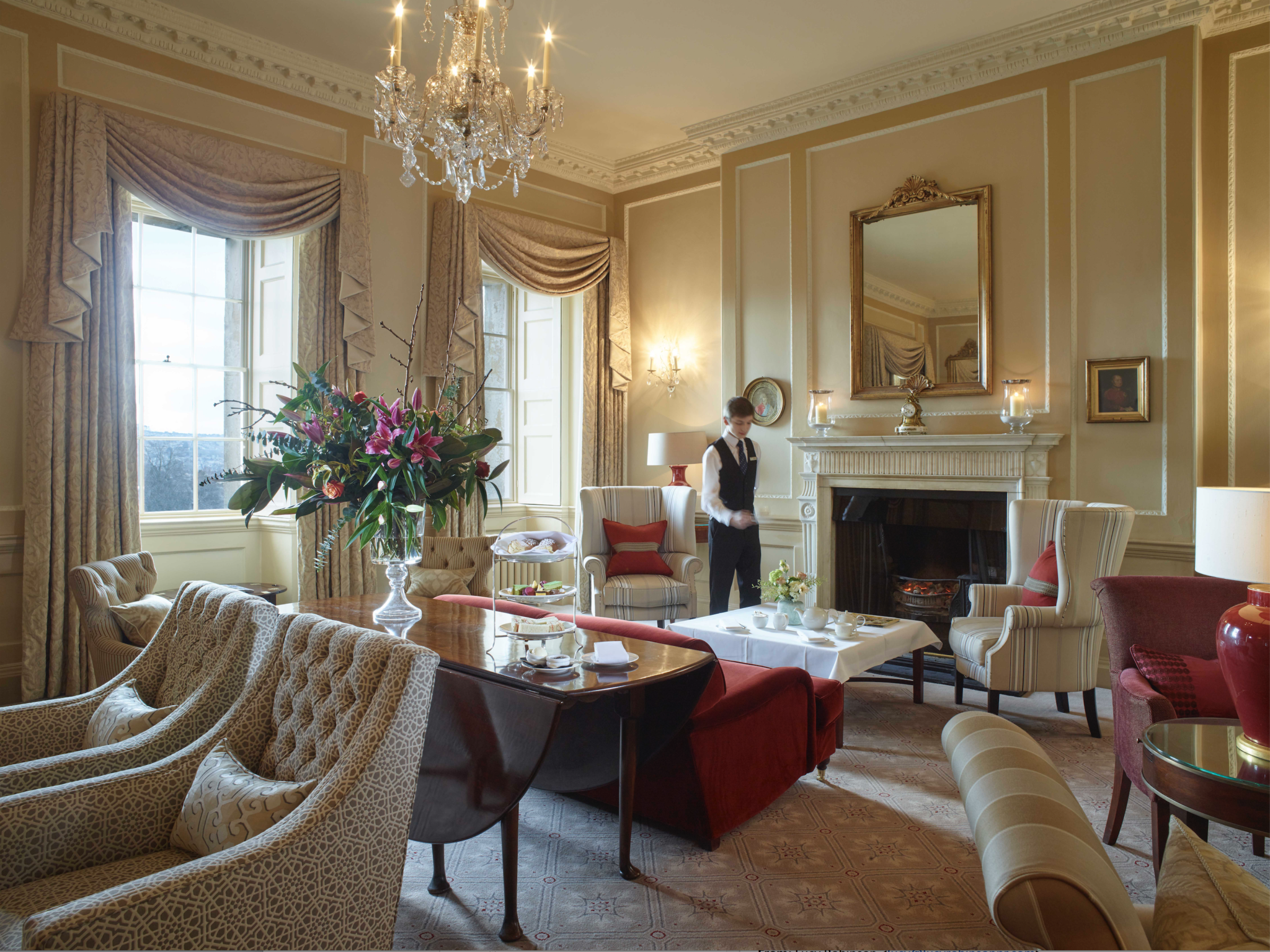Georgian House Interior Design Characteristics

Georgian house interior – Georgian interior design emerged in England during the 18th century and became a prominent style throughout the British Empire. It is characterized by its elegance, symmetry, and proportion, drawing inspiration from classical architecture and motifs.
Georgian interiors typically feature:
- Architectural Elements: High ceilings, large windows, and intricate moldings and cornices.
- Color Palettes: Neutral hues such as white, cream, and gray, often accented with soft pastels or bold colors.
- Furniture Styles: Mahogany furniture with clean lines and graceful curves, such as Chippendale chairs and Hepplewhite sofas.
Symmetry, Proportion, and Balance
Symmetry is a defining feature of Georgian interiors. Rooms are often designed with a central axis, and furniture is arranged in a balanced and symmetrical manner. This creates a sense of order and harmony.
Proportion is also important. Georgian interiors are characterized by a sense of scale and proportion, with rooms and furniture being designed in relation to each other. This creates a harmonious and elegant overall effect.
The Georgian house interior, with its elegant proportions and intricate moldings, exudes a timeless sophistication. While its traditional charm remains intact, contemporary touches can infuse it with a modern edge. For a playful nod to the past, consider incorporating elements of the y2k interior design trend, with its bold colors and geometric patterns.
By juxtaposing the old and the new, the Georgian house interior transforms into a harmonious blend of past and present.
Influence of Classical Architecture
Georgian design is heavily influenced by classical architecture. This is evident in the use of classical motifs such as columns, pediments, and arches. These elements add a sense of grandeur and sophistication to Georgian interiors.
The grand interiors of Georgian houses are a testament to the era’s opulence and refinement. From intricate moldings to soaring ceilings, every detail exudes a sense of grandeur. But even the most stately of homes can benefit from a touch of modern flair.
For those looking to add a touch of contemporary style to their Georgian abode, consider incorporating wallpaper for iPhone 13 Pro Max into your décor. With its bold patterns and vibrant colors, this unexpected addition can breathe new life into any room, while still respecting the home’s historical character.
Furnishings and Decor in Georgian Interiors

Georgian interiors are characterized by their elegant and sophisticated furnishings and decor. Furniture pieces were typically made of high-quality materials, such as mahogany, walnut, and oak, and were often adorned with intricate carvings and moldings. Upholstery was typically made of rich fabrics, such as velvet, silk, and damask.
Furniture
The most common types of furniture found in Georgian homes included chairs, tables, sofas, and beds. Chairs were typically upholstered in leather or fabric and often featured cabriole legs and carved backs. Tables were typically made of mahogany or walnut and often featured elaborate carvings and moldings. Sofas were typically upholstered in velvet or damask and often featured serpentine fronts and curved backs. Beds were typically made of mahogany or walnut and often featured elaborate headboards and footboards.
Decor
In addition to furniture, Georgian interiors were also decorated with a variety of decorative elements, such as paintings, mirrors, and textiles. Paintings were typically hung on the walls and often depicted scenes from history, mythology, or religion. Mirrors were typically placed above fireplaces or over mantels and were often framed in elaborate gilt frames. Textiles were used to upholster furniture, hang from windows, and cover floors.
Georgian House Interior Color Schemes

Georgian interiors were characterized by a sophisticated and elegant color palette that reflected the prevailing artistic and cultural influences of the time. The color schemes were carefully curated to create a sense of harmony and balance within the space, with an emphasis on natural light and muted tones.
Neutrals formed the foundation of Georgian color schemes, providing a backdrop for more vibrant accents. White, cream, and beige were commonly used on walls, ceilings, and moldings, creating a sense of spaciousness and elegance. Pastels, such as soft shades of blue, green, pink, and yellow, were often incorporated into the color scheme to add a touch of color and warmth. These pastel hues were typically used on furniture upholstery, curtains, and other decorative elements.
Accent Colors
Accent colors were used sparingly in Georgian interiors, but they played a vital role in adding depth and interest to the space. Deep shades of blue, green, and red were often used for curtains, upholstery, and other decorative accents. These accent colors were chosen to complement the neutral and pastel tones used in the rest of the scheme, creating a harmonious and visually appealing effect.
Natural Light
Natural light was a key consideration in Georgian interior design. Large windows and skylights were incorporated into the design to maximize the amount of natural light entering the space. This natural light not only brightened the interiors but also had a significant impact on the color scheme. The colors used in Georgian interiors were chosen to reflect and enhance the natural light, creating a warm and inviting atmosphere.
Specific Color Combinations, Georgian house interior
- White walls with pale blue or green accents
- Cream walls with soft pink or yellow accents
- Beige walls with deep blue or green accents
These color combinations created a sense of elegance and sophistication, reflecting the refined tastes of the Georgian era.